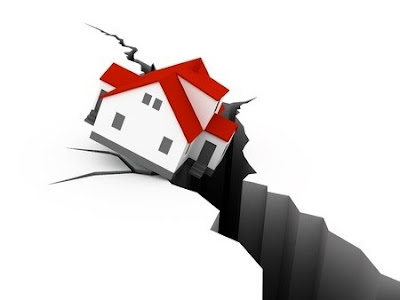EMERGENCY ACTION PLANNING > Blog > Risk Management > Risk Assessment
Risk Assessment
Copyright: mostic / 123RF Stock Photo
When we are setting out to develop a working Emergency Action Plan for ourselves, our family, and our loved ones. We must identify the events that we will need to prepare for.
“Risk comes from not knowing what you’re doing.” – Warren Buffett
During the construction of your Emergency/Disaster risk assessment, this is a time where we are all allowed to be Negative Nellies.
Positive thinking has no place in this process, we must identify all primary, secondary and alternate risk that are relevant to the geographical location or locations that we are preparing for. And we absolutely must identify the risks associated with the actions that we are planning.
Go ahead, crawl down into the dark despair of your imagination and grab everything that wants to see you dead. Your home demolished, an ash heap, or buried under the rising tide, and your loved ones scattered to the four winds never to be seen again. Don’t worry, there is plenty to look at. We absolutely must identify the risks associated with the actions that we are planning.
The Risk Assessment process has two driving factors.
1. The protection of Life.
2. The protection of Property.
The protection of life outweighs the protection of property. Keep this in mind, or it will come back to haunt you.
Now I can hear some of you saying that all we need to prepare for is the major event. Hurricane, Earthquake, Tornado, etc. If we can survive that it’s all downhill from there. Wrong. Once the initial event has passed, it is quite possible that one or more secondary or alternate events will have been triggered and will present themselves.
The primary events that will trigger your EAP:
Natural Disasters
Manmade/Technological Disasters
Civil Disturbances/National Security/Terrorism
Secondary events that may trigger the need for being cogent of the risks associated with them:
1. Evacuation
2. Cooking
3. Sheltering
This list is not all inclusive.
A couple historical secondary/alternate risk events.
April 18, 1906. San Francisco Earthquake. 7.9 on the righter scale destroyed 80% of the city due to fires ignited by broken gas lines and downed electrical lines, killing over 30,000 people. 10% of the city’s population.
THE ASSOCIATED PRESS April 7, 2015. Princess Ann, MD A utility disconnected a stolen meter at the rental home of a kitchen worker and his seven children who were accidentally poisoned in their sleep by carbon monoxide from a gas-powered generator. A gas powered generator is brought into the closed house to provide light and heat. Delmarva Power said it had not cut off the family’s electricity because they were behind on their bills, but rather for their own good. After discovering the illegal connection on March 25, it disconnected it for safety reasons, the utility said.
I have heard of other antidotal incidents about bringing in the BBQ to heat the sleeping area after a severe winter storm killed the power, no one wakes up.
These two incidences are examples of secondary and alternate hazards the can present themselves after the primary event.
Developing risk assessments are driven throughout the entire Emergency Action Planning process.
The five strep risk management process
1. Identify the Hazards
2. Assess the Hazards
3. Develop controls and make risk decisions
4. Implement Controls
5. Supervise and Evaluate
My go to reference is; ATP 5-19 US Army Risk Management. I am familiar with this material because I used it throughout my military career. Searching the subject of Risk Management will bring up many resources, mostly business/financial oriented, some of which are overly complex. ATP 5-19 US Army Risk Management is readily available on the internet. Change the wording to suite your needs and circumstance.
Realize that it is a practical impossibility to identify every hazard you may be faced with. The process of identifying, mitigating, and planning for the hazards you can, will present a positive outlook on your ability to protect yourself, your family, your loved ones and your property.
By the way. The number one hazard faced by everyone is FIRE. It is preventable. And it causes more death and property damage every year than all the combined Natural Disasters of the year. Cooking is the leading cause of fires. And smoking is the leading cause of deaths due to fire. (Fire Analysis and Research Division, 2014)
Till Next time
“Be Safe”
References;
Fire Analysis and Research Division. (2014, September). Printable fact sheets. Retrieved from www.nfpa.org: http://www.nfpa.org/research/reports-and-statistics/printable-fact-sheets
